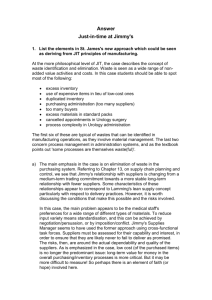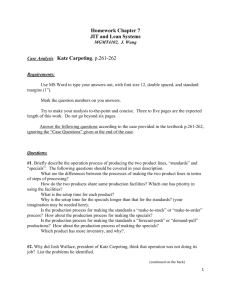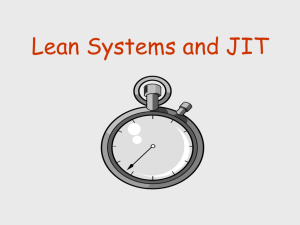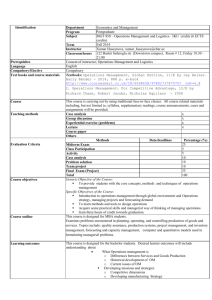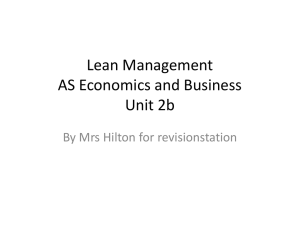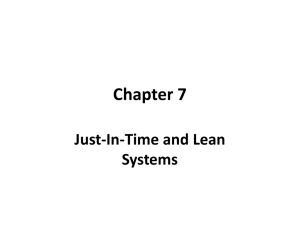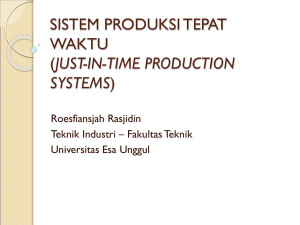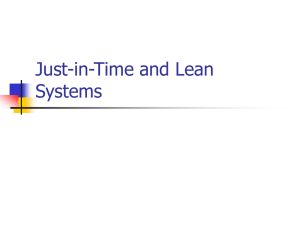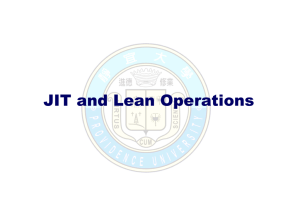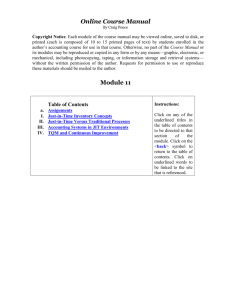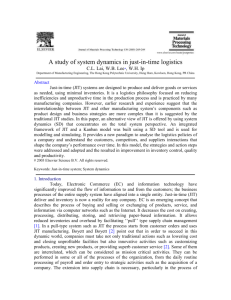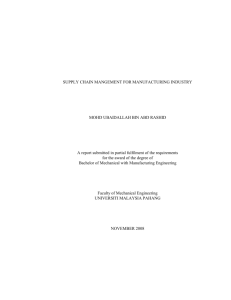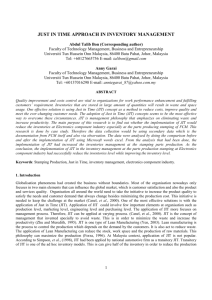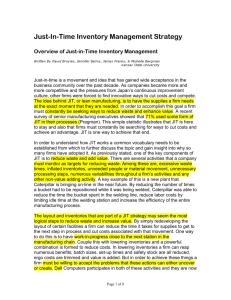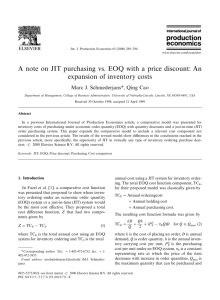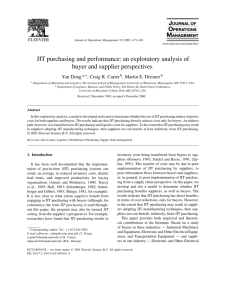Chapter 16 Outline
advertisement
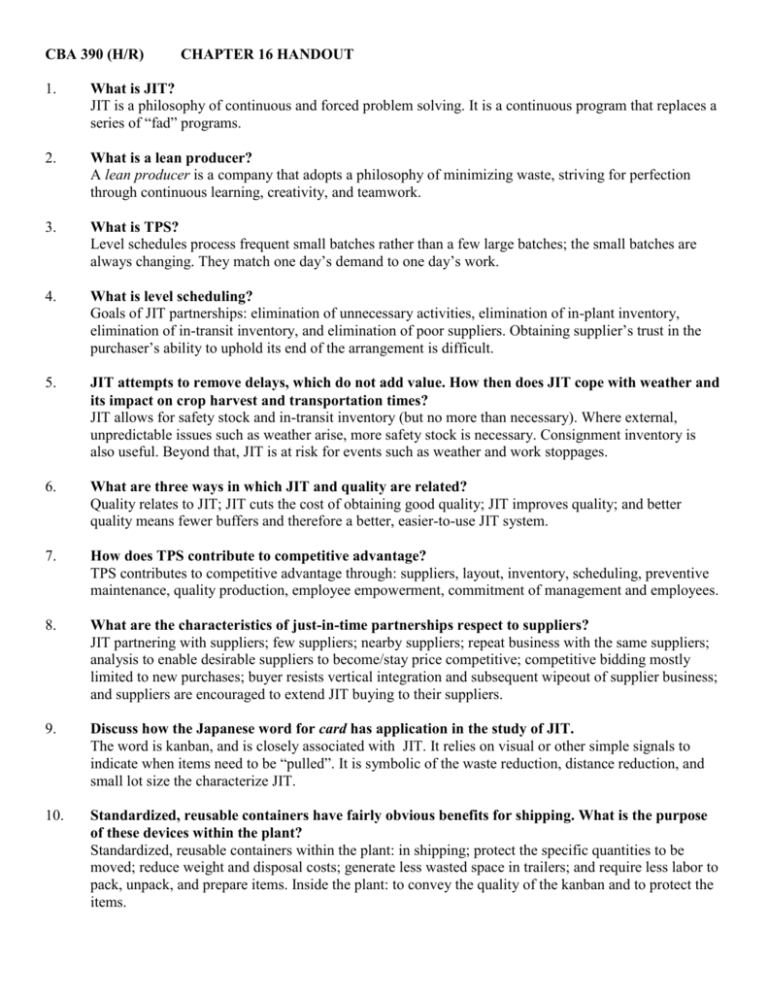
CBA 390 (H/R) CHAPTER 16 HANDOUT 1. What is JIT? JIT is a philosophy of continuous and forced problem solving. It is a continuous program that replaces a series of “fad” programs. 2. What is a lean producer? A lean producer is a company that adopts a philosophy of minimizing waste, striving for perfection through continuous learning, creativity, and teamwork. 3. What is TPS? Level schedules process frequent small batches rather than a few large batches; the small batches are always changing. They match one day’s demand to one day’s work. 4. What is level scheduling? Goals of JIT partnerships: elimination of unnecessary activities, elimination of in-plant inventory, elimination of in-transit inventory, and elimination of poor suppliers. Obtaining supplier’s trust in the purchaser’s ability to uphold its end of the arrangement is difficult. 5. JIT attempts to remove delays, which do not add value. How then does JIT cope with weather and its impact on crop harvest and transportation times? JIT allows for safety stock and in-transit inventory (but no more than necessary). Where external, unpredictable issues such as weather arise, more safety stock is necessary. Consignment inventory is also useful. Beyond that, JIT is at risk for events such as weather and work stoppages. 6. What are three ways in which JIT and quality are related? Quality relates to JIT; JIT cuts the cost of obtaining good quality; JIT improves quality; and better quality means fewer buffers and therefore a better, easier-to-use JIT system. 7. How does TPS contribute to competitive advantage? TPS contributes to competitive advantage through: suppliers, layout, inventory, scheduling, preventive maintenance, quality production, employee empowerment, commitment of management and employees. 8. What are the characteristics of just-in-time partnerships respect to suppliers? JIT partnering with suppliers; few suppliers; nearby suppliers; repeat business with the same suppliers; analysis to enable desirable suppliers to become/stay price competitive; competitive bidding mostly limited to new purchases; buyer resists vertical integration and subsequent wipeout of supplier business; and suppliers are encouraged to extend JIT buying to their suppliers. 9. Discuss how the Japanese word for card has application in the study of JIT. The word is kanban, and is closely associated with JIT. It relies on visual or other simple signals to indicate when items need to be “pulled”. It is symbolic of the waste reduction, distance reduction, and small lot size the characterize JIT. 10. Standardized, reusable containers have fairly obvious benefits for shipping. What is the purpose of these devices within the plant? Standardized, reusable containers within the plant: in shipping; protect the specific quantities to be moved; reduce weight and disposal costs; generate less wasted space in trailers; and require less labor to pack, unpack, and prepare items. Inside the plant: to convey the quality of the kanban and to protect the items. 11. Does lean production work in the service sector? Provide an illustration. Lean production is applicable everywhere. It ranges from layouts at McDonald’s kitchens (see the Global Company Profile in Chapter 9) to driving down inventory at Arnold Palmer Hospital (see the video case study in this chapter). 12. Which lean techniques work in both the manufacturing and service sectors? Virtually all lean techniques have application in both manufacturing and services. The lean techniques of JIT, layout (work cells), inventory reduction, and tight scheduling have few boundaries


